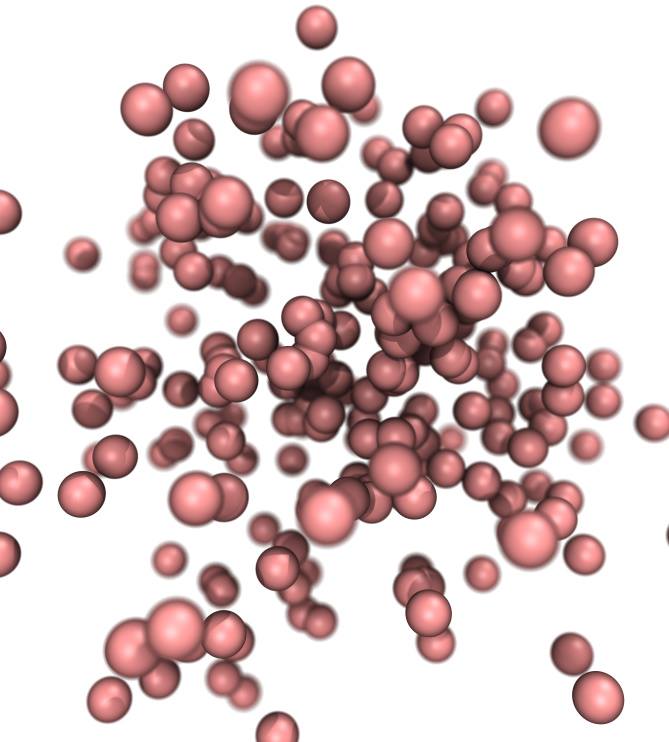This project is a molecular simulation with reaction model using Random Walk algorithm. It was made as an assignment for the advanced numerical methods course.
- Python version >= 3.4
- Numpy module
To run the program you have to import this package from randmol import RunProgram
and then create a RunProgram object object with argument numofiter > 0,
i.e. simulation = RunProgram(numofiter=5000, numofmols=20, outputname='default.xyz').
After that you should call the method runsim() to start the simulation, i.e. simulation.runsim()
There is several arguments which are explained below:
numseed [int] [default is 0] - Seed for random number generator.
numofiter [int] [default is 0] - Random walk algorithm number of iterations.
maxmov [int] [default is 2] - Maximum length in angstroms which a molecule can be translated in one random walk iteration.
numofmols [int] [default is 5] - Number of molecules in the simulation.
boxsize [tuple] [default is (30, 30, 30)] - Size of 3D periodic boundary condition box in angstroms.
bondformprob [float] [default is 0.5] - Probability of forming a bond during one random walk iteration.
bondbreakprob [float] [default is 0.1] - Probability of breaking a bond during one random walk iteration.
bondlenform [int] [default is 2] - Length of bond after forming bond between two molecules.
outputname [string] [default is default.xyz] - Outputname for molecular trajectory in XYZ format.
Output is xyz file which can be visualized by free software like VMD or Molden. Example of 240 atom simulation, visualised with VMD.
